-
 chevron_right
chevron_right
Qualcomm vend du rêve avec ses Snapdragon X… mais mieux vaut se méfier
news.movim.eu / JournalDuGeek · 14:14
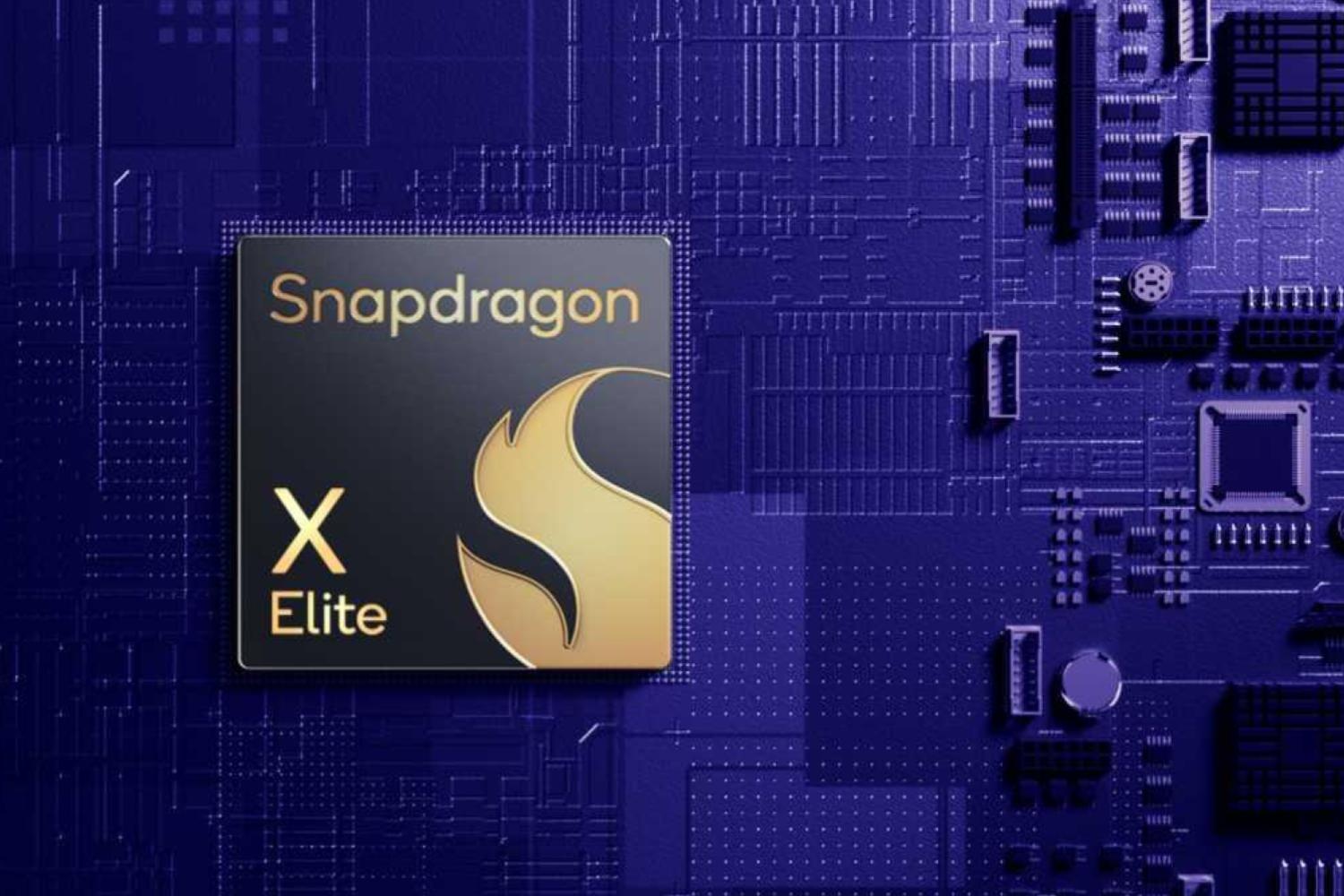
 chevron_right
chevron_right
Qualcomm vend du rêve avec ses Snapdragon X… mais mieux vaut se méfier
news.movim.eu / JournalDuGeek · 14:14

Contact publication
pubsub.blastersklan.com / slashdot · 03:58 edit · 1 minute
An anonymous reader quotes a report from Tom's Hardware: TSMC announced its leading-edge 1.6nm-class process technology today, a new A16 manufacturing process that will be the company's first Angstrom-class production node and promises to outperform its predecessor, N2P, by a significant margin. The technology's most important innovation will be its backside power delivery network (BSPDN). Just like TSMC's 2nm-class nodes (N2, N2P, and N2X), the company's 1.6nm-class fabrication process will rely on gate-all-around (GAA) nanosheet transistors, but unlike the current and next-generation nodes, this one uses backside power delivery dubbed Super Power Rail. Transistor and BSPDN innovations enable tangible performance and efficiency improvements compared to TSMC's N2P: the new node promises an up to 10% higher clock rate at the same voltage and a 15%-20% lower power consumption at the same frequency and complexity. In addition, the new technology could enable 7%-10% higher transistor density, depending on the actual design. The most important innovation of TSMC's A16 process, which was unveiled at the company's North American Technology Symposium 2024, is the introduction of the Super Power Rail (SPR), a sophisticated backside power delivery network (BSPDN). This technology is tailored specifically for AI and HPC processors that tend to have both complex signal wiring and dense power delivery networks. Backside power delivery will be implemented into many upcoming process technologies as it allows for an increase in transistor density and improved power delivery, which affects performance. Meanwhile, there are several ways to implement a BSPDN. TSMC's Super Power Rail plugs the backside power delivery network to each transistor's source and drain using a special contact that also reduces resistance to get the maximum performance and power efficiency possible. From a production perspective, this is one of the most complex BSPDN implementations and is more complex than Intel's Power Via. Volume production of A16 is slated for the second half of 2026. "Therefore, actual A16-made products will likely debut in 2027," notes the report. "This timeline positions A16 to potentially compete with Intel's 14A node, which will be Intel's most advanced node at the time."
Read more of this story at Slashdot.
TSMC Unveils 1.6nm Process Technology With Backside Power Delivery chevron_right
chevron_right
Lunar Lake : les futurs processeurs d’Intel vont imiter ceux d’Apple, pour le meilleur et pour le pire
news.movim.eu / JournalDuGeek · 7 days ago - 12:31
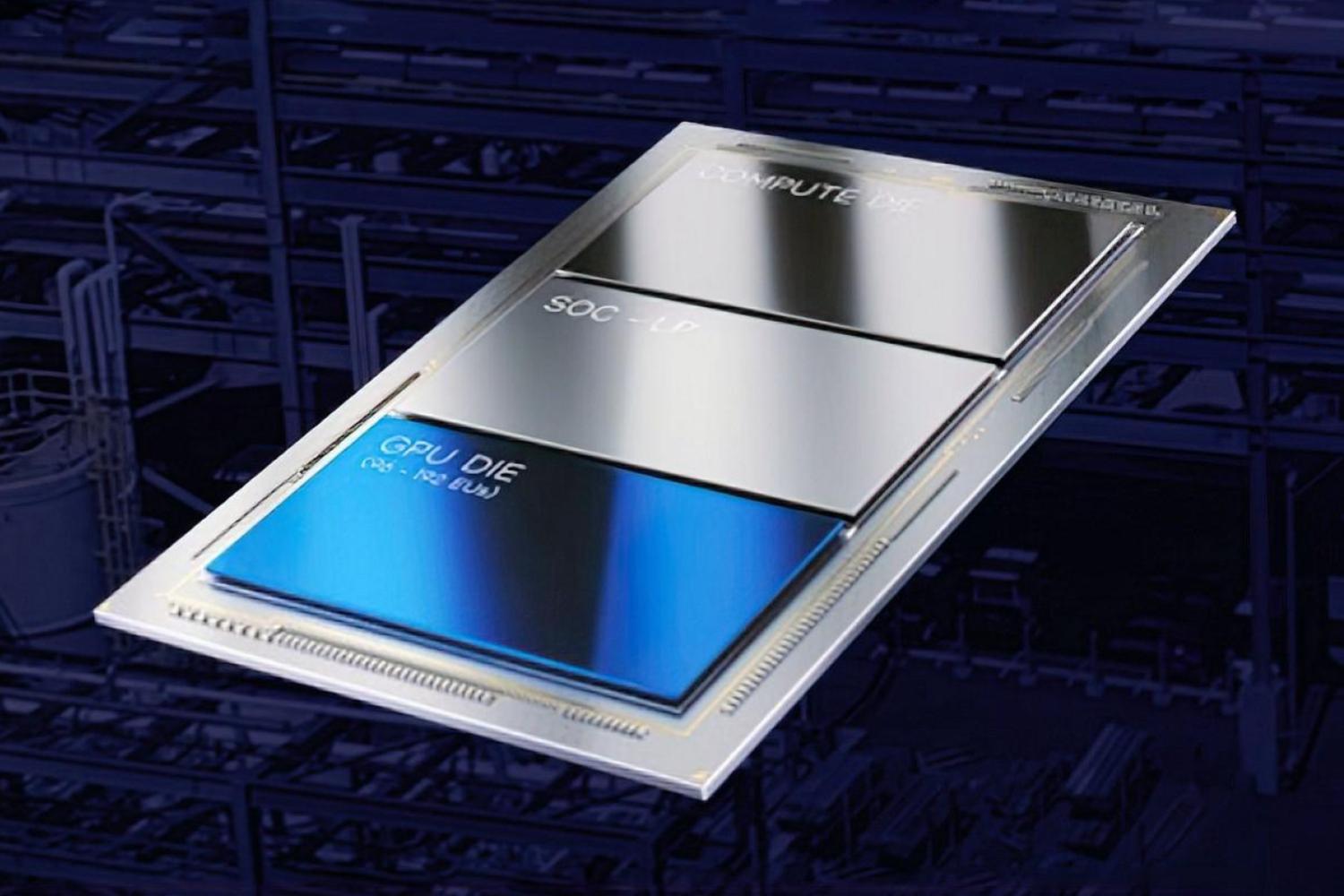
 chevron_right
chevron_right
Framework’s software and firmware have been a mess, but it’s working on them
news.movim.eu / ArsTechnica · Monday, 15 April - 11:00

Enlarge / The Framework Laptop 13. (credit: Andrew Cunningham)
Since Framework showed off its first prototypes in February 2021 , we've generally been fans of the company's modular, repairable, upgradeable laptops.
Not that the company's hardware releases to date have been perfect—each Framework Laptop 13 model has had quirks and flaws that range from minor to quite significant , and the Laptop 16's upsides struggle to balance its downsides. But the hardware mostly does a good job of functioning as a regular laptop while being much more tinkerer-friendly than your typical MacBook, XPS, or ThinkPad.
But even as it builds new upgrades for its systems, expands sales of refurbished and B-stock hardware as budget options , and promotes the re-use of its products via external enclosures , Framework has struggled with the other side of computing longevity and sustainability: providing up-to-date software.
 chevron_right
chevron_right
Intel’s “Gaudi 3” AI accelerator chip may give Nvidia’s H100 a run for its money
news.movim.eu / ArsTechnica · Thursday, 11 April - 20:56
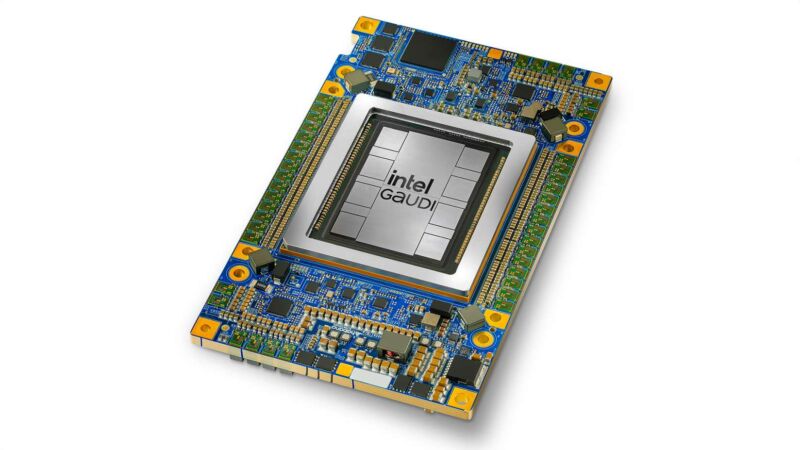
Enlarge / An Intel handout photo of the Gaudi 3 AI accelerator. (credit: Intel )
On Tuesday, Intel revealed a new AI accelerator chip called Gaudi 3 at its Vision 2024 event in Phoenix. With strong claimed performance while running large language models (like those that power ChatGPT ), the company has positioned Gaudi 3 as an alternative to Nvidia's H100 , a popular data center GPU that has been subject to shortages , though apparently that is easing somewhat .
Compared to Nvidia's H100 chip, Intel projects a 50 percent faster training time on Gaudi 3 for both OpenAI's GPT-3 175B LLM and the 7-billion parameter version of Meta's Llama 2 . In terms of inference (running the trained model to get outputs), Intel claims that its new AI chip delivers 50 percent faster performance than H100 for Llama 2 and Falcon 180B , which are both relatively popular open-weights models.
Intel is targeting the H100 because of its high market share , but the chip isn't Nvidia's most powerful AI accelerator chip in the pipeline. Announcements of the H200 and the Blackwell B200 have since surpassed the H100 on paper, but neither of those chips is out yet (the H200 is expected in the second quarter of 2024—basically any day now).
 chevron_right
chevron_right
Intel is investigating game crashes on top-end Core i9 desktop CPUs
news.movim.eu / ArsTechnica · Tuesday, 9 April - 17:14 · 1 minute
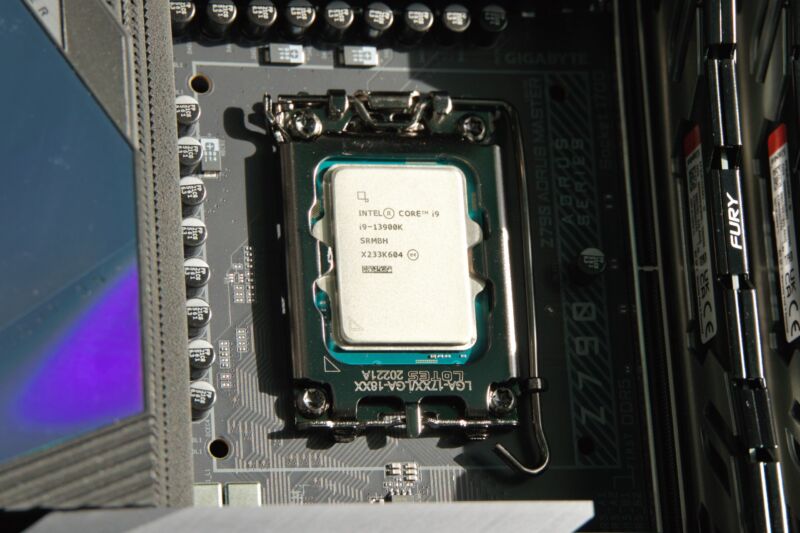
Enlarge / Intel's high-end Core i9-13900K and 14900K are reportedly having crashing problems in some games. (credit: Andrew Cunningham)
If you own a recent high-end Intel desktop CPU and you've been running into weird game crashes lately, you're not alone.
Scattered reports from Core i9-13900K and i9-14900K users over the last couple of months have pointed to processor power usage as a possible source of crashes even in relatively undemanding games like Fortnite . Games like Hogwarts Legacy , Remnant 2 , Alan Wake 2 , Horizon: Zero Dawn , The Last of Us Part 1 , and Outpost: Infinity Siege have also reportedly been affected ; the problem primarily seems to affect titles made with Epic's Unreal Engine. Intel said in a statement to ZDNet Korea (via The Verge ) that it's looking into the problems, escalating it from an "isolated issue" to something that may be more widespread and could require a more systemic fix.
Related CPUs like the i9-13900KF, i9-14900KF, i9-13900KS, and i9-14900KS may be affected, too, since they're all the same basic silicon. Some user reports have also indicated that the i7-13700K and i7-14700K series may also be affected.
 chevron_right
chevron_right
Intel, Microsoft discuss plans to run Copilot locally on PCs instead of in the cloud
news.movim.eu / ArsTechnica · Wednesday, 27 March - 18:45 · 1 minute
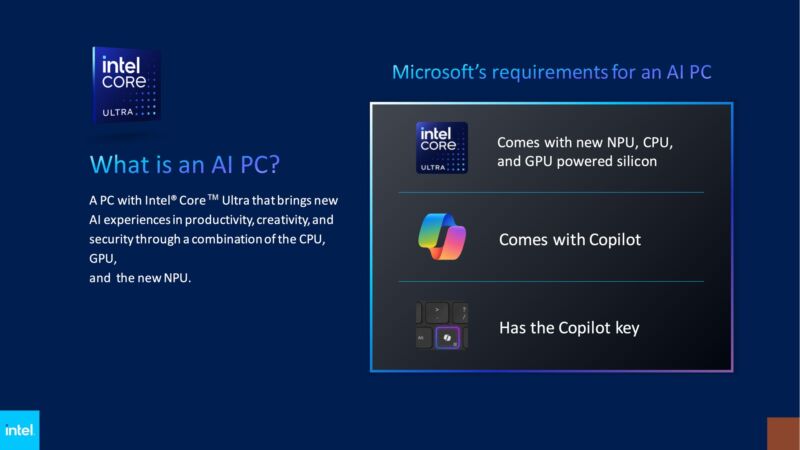
Enlarge / The basic requirements for an AI PC, at least when it's running Windows. (credit: Intel)
Microsoft said in January that 2024 would be the year of the "AI PC," and we know that AI PCs will include a few hardware components that most Windows systems currently do not include—namely, a built-in neural processing unit (NPU) and Microsoft's new Copilot key for keyboards. But so far we haven't heard a whole lot about what a so-called AI PC will actually do for users.
Microsoft and Intel are starting to talk about a few details as part of an announcement from Intel about a new AI PC developer program that will encourage software developers to leverage local hardware to build AI features into their apps.
The main news comes from Tom's Hardware , confirming that AI PCs would be able to run "more elements of Copilot," Microsoft's AI chatbot assistant, "locally on the client." Currently, Copilot relies on server-side processing even for small requests, introducing lag that is tolerable if you're making a broad request for information but less so if all you want to do is change a setting or get basic answers. Running generative AI models locally could also improve user privacy, making it possible to take advantage of AI-infused software without automatically sending information to a company that will use it for further model training.
 chevron_right
chevron_right
Entre la Chine et les États-Unis, la guerre des puces est déclarée
news.movim.eu / JournalDuGeek · Monday, 25 March - 12:46
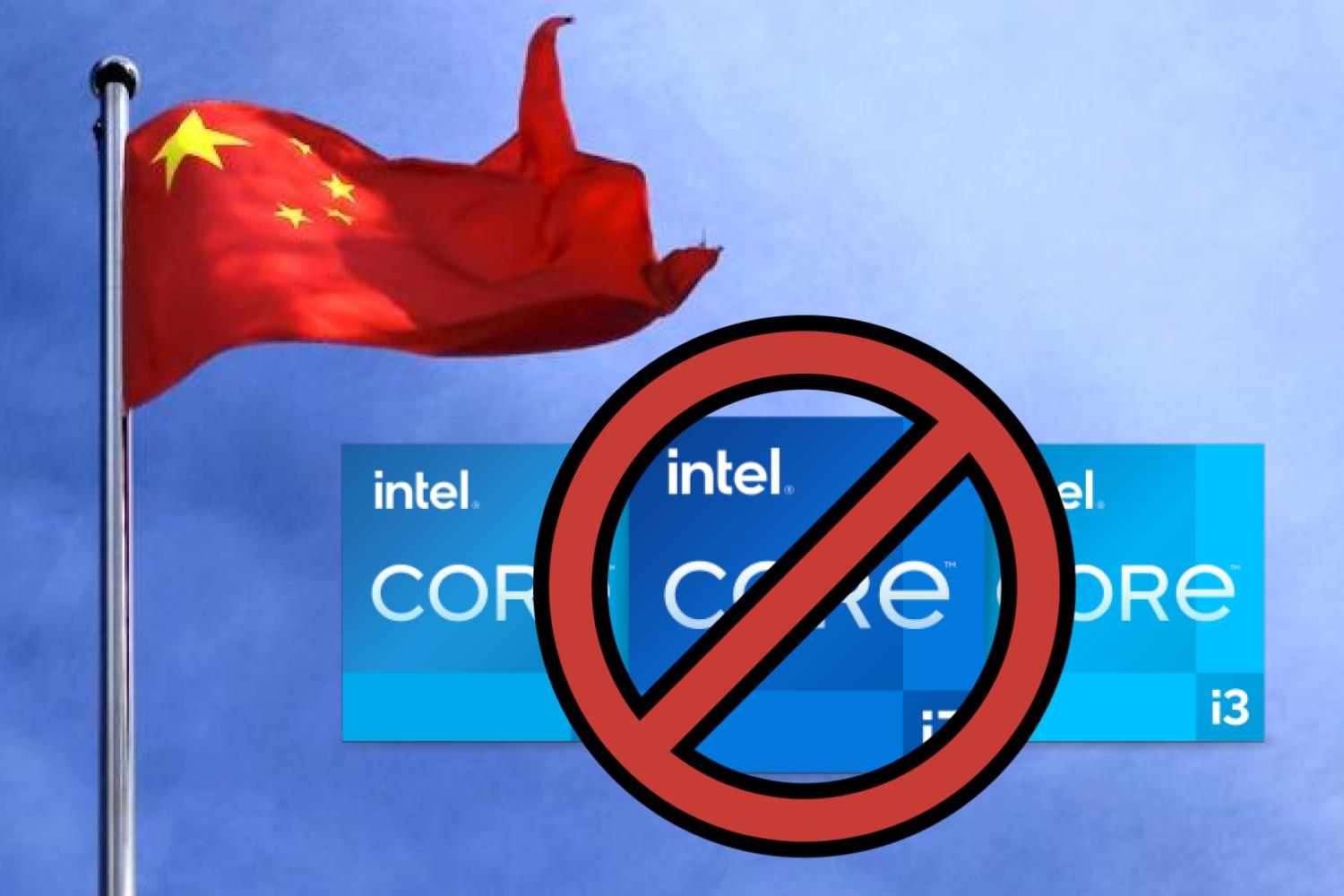
 chevron_right
chevron_right
AMD promises big upscaling improvements and a future-proof API in FSR 3.1
news.movim.eu / ArsTechnica · Thursday, 21 March - 17:20
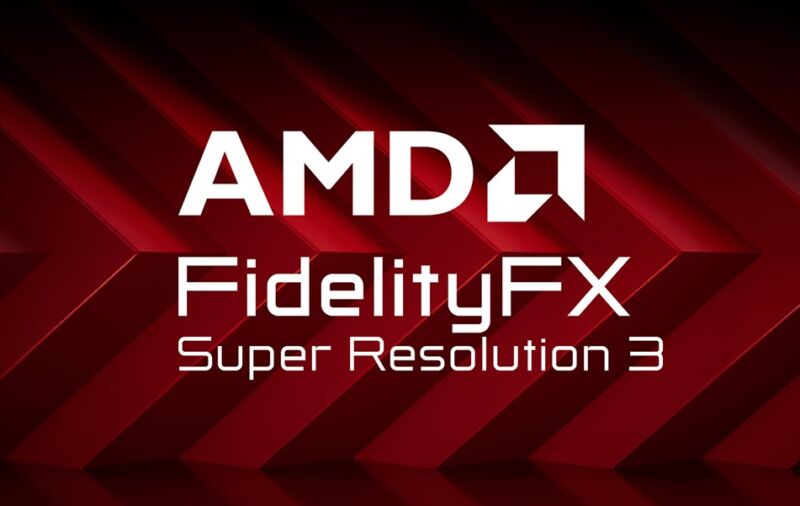
Enlarge (credit: AMD)
Last summer, AMD debuted the latest version of its FidelityFX Super Resolution (FSR) upscaling technology . While version 2.x focused mostly on making lower-resolution images look better at higher resolutions, version 3.0 focused on AMD's "Fluid Motion Frames," which attempt to boost FPS by generating interpolated frames to insert between the ones that your GPU is actually rendering.
Today, the company is announcing FSR 3.1 , which among other improvements decouples the upscaling improvements in FSR 3.x from the Fluid Motion Frames feature. FSR 3.1 will be available "later this year" in games whose developers choose to implement it.
Fluid Motion Frames and Nvidia's equivalent DLSS Frame Generation usually work best when a game is already running at a high frame rate, and even then can be more prone to mistakes and odd visual artifacts than regular FSR or DLSS upscaling. FSR 3.0 was an all-or-nothing proposition, but version 3.1 should let you pick and choose what features you want to enable.